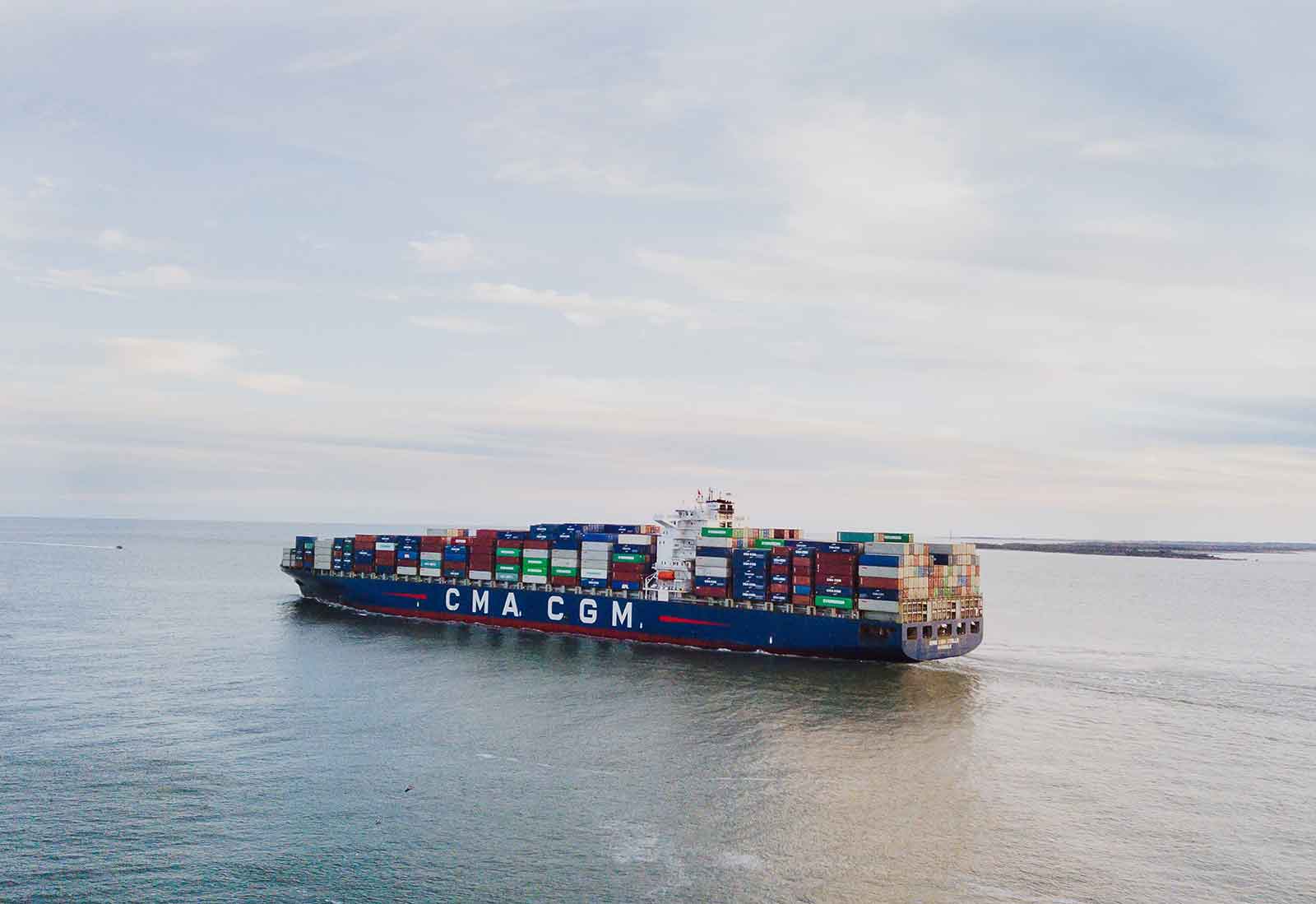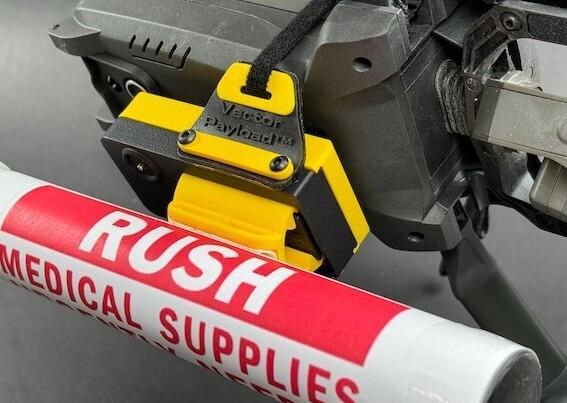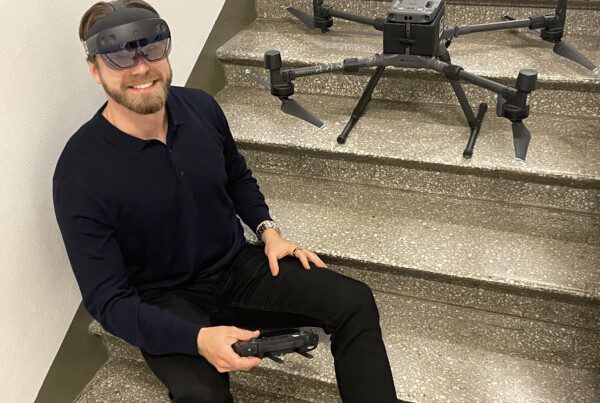Vessel inspections are a routine part of the marine industry and are conducted to ensure that ships are operating safely and in compliance with international regulations.
Traditionally, these inspections are carried out by human inspectors who physically board the vessel and conduct checks and assessments. However, recent advancements in drone technology and augmented reality (AR) goggles have opened up new possibilities for how vessel inspections can be conducted.
Safety in vessel Inspections
When you’re using a drone for vessel inspections you have the ability to safely and efficiently inspect hard-to-reach areas of the ship. If your drone is equipped with cameras and sensors it can easily fly to areas such as the ship’s mast, stack, or the top of tanks, providing a comprehensive view of the ship’s condition without putting you at risk.
Imagine the traditional scenario
You’re a company that owns one of the 14,000 ships that pass through the Panama canal annually. For each ship passing through the Panama Canal, your vessel is subject to a thorough inspection procedure to ensure they are seaworthy and meet canal regulations.
(Check out a cool video showing how ships pass through the panama canal)
This might include checks on dimensions and draft (to ensure the ship fits in the locks), stability and structural integrity, safety equipment and hazardous cargo declaration
Who does these checks?
The Panama Canal Authority (ACP) conducts the inspections of ships passing through the canal. They do a few things each time they check out a ship;
- A visual inspection by ACP Canal Pilots as the ship approaches the canal.
- Verification of the ship’s documentation and certificates by ACP staff.
- An on-board inspection by ACP officials to check equipment, crew qualifications, and hazardous cargo declaration.
If necessary, the ACP may also carry out a more detailed inspection, including a survey of the ship’s structure and stability. This is done to ensure that the ship meets the required safety standards and can safely navigate the canal. The inspections are designed to ensure the safety of the ships, the canal, and its workers.
It’s expensive and time-consuming
So you have the cost of providing the ACP access to your ship before it reaches the canal (potentially by helicopter which is expensive) and then you have a potentially dangerous situation where an inspector has to look at areas that could be hazardous, such as looking at the cargo crate decks which is vital to check in the Panama canal.
If for instance, a cargo crate falls into one of the canals it’s a huge cost to you the ship owner to remove them from the water which can block shipping lanes. Once it happens your insurance premiums will go through the roof.
If you’re inspecting the ship cargo containers you have to look out for;
- Unstable stacking: If the cargo crates are stacked in an unstable manner, it can cause the ship to become unbalanced, increasing the risk of capsizing.
- Shift during transit: If the cargo crates are not properly secured, they can shift during transit, causing damage to the ship and increasing the risk of a cargo spill.
- Obstruction of escape routes: If the cargo crates are positioned in a way that blocks or obstructs escape routes, it can make it difficult for crew or passengers to evacuate the ship in an emergency safely.
- Interference with navigation: If the cargo crates are positioned in a way that interferes with the ship’s navigation, it can pose a safety hazard and make it difficult for the ship to manoeuvre in rough seas.
Now imagine the scenario if your inspector is using a drone from the safety of the shore.
Firstly it’s cheaper.
No need to pay for a man to be flown offshore to inspect the ship at anchor. You can simply power up the drone and fly off to inspect via real-time feeds to the control center at the ACP.
Secondly, it’s safer for the inspector
The drone could be directed by a skilled pilot with AR-assisted flight management and controls, allowing him to spot hazards, take measurements of the ship specifications, examine safety equipment and examine any hazardous cargo from the relative safety of the shore.
You can know from a few kilometres away through the AR goggles the exact position of the drone vastly improving the situational awareness of the pilot and not having to rely on a spotter on the ship.
Using AR goggles such as Hololens for drone management can enhance situational awareness and improve the overall efficiency of the inspection even at very long distances.
AirHUD works with Microsoft HoloLens 2 AR goggles and DJI drones
When you use AirHUD from Anarky Labs rather than looking down at your console or tablet to control the drone, you’re able to look up and see the drone’s location in relation to the ship. This makes it easier for you to not hit obstacles when flying the drone and let’s face it, there are plenty of obstacles on a ship!
Digital overlays, much like readouts positioned in the sky, where your drone is flying can provide information such as the drone’s battery life, flight path, and telemetry data. This can help you navigate the drone and make more informed decisions about where you need to focus your inspection.
Inspection data can be streamed
Another advantage of using drones and AR goggles for vessel inspections is the ability to quickly and easily access and review inspection data. With high-resolution cameras and sensors, drones can capture detailed images and data that can be analyzed and stored for later review. Both Hololens and DJI have the ability to record and stream live footage from the drone, making it easy for multiple parties to view the inspection in real-time, regardless of their location.
What can be inspected?
In terms of safety equipment and systems, you can inspect lifeboats, firefighting equipment, and emergency systems from a safe distance. You can use the live footage from the drone to check for any issues or areas of concern, without having to put yourself in harm’s way.
You can also perform Structural integrity inspections using drones, which can fly around the ship capturing images of the hull, decks, and superstructure.
These images can be analyzed for signs of corrosion, wear and tear, or other damage that could compromise the structural integrity of the ship.
Safety, compliance and the environment
In terms of compliance with international regulations, drones can be used to inspect oil tanker containers, communications systems, and pollution control systems, and ensure that they are in compliance with international standards.
Environmental compliance inspections can also be performed using drones, which can capture images of the ship’s environmental performance, such as its emissions, discharge, and sewage treatment systems.
What do the Industry think?
Darryn Trowell CEO of Pentonet a company in the Maritime sector sees many uses of the technology Anarky Labs are producing;
”At Pentonet we’re pioneers of near shore communications. People, sensors, data, the ship itself. Connectivity is our business. When we saw the software and capabilities of AirHUD we saw a natural opportunity to optimise the communications flow between the ship inspectors and the various stakeholders in the maritime industry.
Things like structural inspections of the ship open up potentially new opportunities to increase efficiency. With AirHUD you can increase the speed of quality inspections, the coverage, improve on accuracy, and safety of the inspection, while also providing real-time data and information to the inspector. That data can be used directly in their reports rather than the time-consuming documentation process they have today.
We believe it’s the future of ship inspection
Darryn Trowell CEO - Pentonet
In Summary
Overall, using drones and AR goggles for vessel inspections can greatly enhance the efficiency, safety and accuracy of the inspections process. The ability to remotely inspect hard-to-reach areas, navigate the drone, and review data and live footage in real-time can greatly improve the overall quality and speed of the inspection.
Hannu Lesonen is the CEO and founder of Anarky Labs, a pioneer in developing situational awareness software for drone operations. Hannu has been a speaker at many events around topics such as BVLOS in drone operations and extending vision in robotic operations. He’s always available to discuss if you’re interested in trying the software, or if you’re a journalist or an event manager. He can be reached at his email so feel free to reach out.





